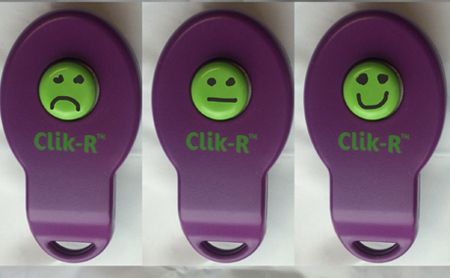"Don't use that tone with me," said no clicker ever.
Clickers don't get frustrated and they never, ever sass, shout or dis your dog. Here's how to incorporate them into training at your veterinary practice.

Melissa Spooner, LVT, VTS (behavior), BS, KPA-CTP, doesn't always train dogs using classical conditioning, but when she does, she prefers the clicker. At a recent CVC, she said that when you need the neutral stimulus, the clicker can work out better than using a verbal marker word.
Why? Because some days you might be less energetic and say the word in a Debbie Downer voice and others, you may be hyped up and sound like Minnie Mouse. The clicker always sounds the same.
What if you lose the clicker, though? Buy a lot of them and leave them all over the place so you can always find one.
Last, but not least: Consider the click as a promise to the dog that a treat's coming. So the clicker really needs to be on-point with the behavior you want to reinforce, but it's OK if you fumble a little bit in your bait bag for a second or two for the treat.
Bonus tip: All out of hands? Use a foot! Look for clickers you can activate with your foot when you're in the middle of an intense training session.